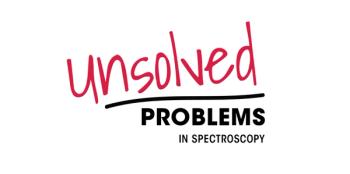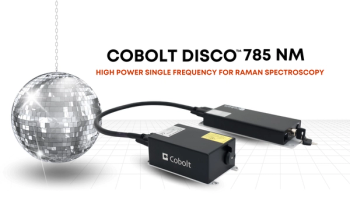
- Spectroscopy-07-01-2020
- Volume 35
- Issue 7
Light Matters . . . 35 Years of New Sources for Spectroscopy
On the occasion of Spectroscopy’s 35th birthday, I thought it would be an interesting opportunity to consider the amazing explosion in light sources for spectroscopy over the last few decades.
On the occasion of Spectroscopy’s 35th birthday, I thought it would be an interesting opportunity to consider the amazing explosion in light sources for spectroscopy over the last few decades. There has been a proliferation of form factors, with new wavelengths and a substantial increase in portability. Comparing what we had in my well-funded graduate research laboratory in the early 1990s to today makes me realize just how far we have come, and what enablers these sources are for spectroscopists.
LEDs
Although light-emitting diodes (LEDs) were developed at General Electric and Texas Instruments in the early 1960s, beyond the low-power, standard red version, it wasn’t until the early 1990s that they were commercially available in numerous wavelengths. Now, they are widely used in video displays and home lighting, and infrared LEDs are used in remote control units for televisions and numerous other formats. The evolution of the LED for spectroscopy was important enough that it was a focus of the very first issue of Nature Photonics in January 2007, where it was noted that the Moore’s Law analogy for LEDs, Haitz’s Law, had been successfully predicting a 20x increase in light output and a 10x decrease in cost each decade. Continuous improvement on the ultraviolet (UV) end of the wavelength range, in particular, has been a boon for spectroscopy.
High-power, spectroscopically useful LEDs are now found from the UV (around 260 nm) all the way through the near-infrared, with a variety of spectral shapes. Suppliers such as Thorlabs, Mightex, and Ocean Insight offer packaged versions of LEDs with increasingly sophisticated controllers (including, for example, modulation), while manufacturers such as Marubeni, Osram, and Marktech, among many, supply LEDs in a variety of standard formats. Typical power is in the 10s of mW for the in the 250–350 nm range and above 1000 nm, but can be 500–1500 mW between 350–1000 nm. LEDs are increasingly packaged for mobile and industrial sensors, favored for their long lifetime and high brightness.
Quantum Cascade Lasers
Perhaps no single light source has as much promise right now as quantum cascade lasers, which were first demonstrated at Bell Laboratories in 1994. Unlocking the key wavelength region between about 4 and 12 micrometers with a tunable, coherent source has unleashed a powerful tool, particularly useful for gas analysis. Because these wavelengths correspond to fundamental molecular vibrations that strongly absorb in relatively simple molecules, detection limits can be quite low. The collimated laser is particularly useful for application in long-path gas cells and in open-path gas monitoring, as well as for integration in standoff or microscope systems. New materials and variation in the design of the active region have been continuously pushing the boundaries of wavelength coverage and performance for quantum cascade lasers.
Alpes Lasers, AdTech Optics, and Stratium can supply a variety of quantum cascade lasers, with particular wavelength ranges and standard packaging. Block Engineering and Daylight Solutions provide commercially packaged lasers integrated into devices, including microscopy and gas detection applications. Figure 1 illustrates the use of a Spero QT quantum cascade laser-based infrared (IR) microscope (Daylight Solutions) in combination with a classification model for colorectal cancer to reveal tumor cells, dead tissue, and inflammatory response. This work by the group of Klaus Gerwert from Ruhr University in Germany illustrates the unique advantages of a tunable mid-IR source over the traditional globar used in Fourier-transform IR (FT-IR) applications. Similarly, the LaserWarn fenceline monitoring system (Block Engineering) can scan open paths up to 500 m, and has gas detection limits in the mid-parts-per-billion range for toxic industrial chemicals.
Terahertz Sources
Terahertz radiation has been studied for a long time, but traditionally has been generated either by microwave sources, which have relatively low output power, or by high power (but quite expensive) sources, such as free electron lasers and synchrotrons. Such sources have been great for research, but are too large for practical applications. More recently, the use of photoconductive antennas on semiconductor materials for terahertz generation has become popular. With a pair of laser diodes, a continuous wave can be formed with the difference frequency between the two pump lasers. Tuning the pump lasers can result a spectrally pure continuous wave source. Alternatively, a femtosecond laser (typically a fiber laser) can be used to produce a broadband terahertz source. Both of these methods can be relatively inexpensive and relatively high-power. Recently, quantum cascade lasers have also become available that can reach into the terahertz range.
Menlo Systems and Toptica Photonics are two of the more prominent manufacturers of packaged terahertz sources based on photoconductive antennas, while LongWave Photonics develops terahertz systems around their quantum cascade laser platform.
Optical Parametric Oscillators
This class of devices began to emerge in the mid-1990s. Using a doped crystal such as periodically-poled lithium niobate (PPLN), a continuous pump beam can be separated into two distinct wavelengths, and tuned, depending on cavity configuration. PPLN is high efficiency, and can generate tunable, high energy continuous output in the visible (roughly 400–700 nm) and IR (roughly 1.1–4.5 micrometer) regions. Spectra-Physics and Coherent each make popular OPO modules. These are confined to the laboratory because of their relatively sensitive nature and need for relatively large pump lasers, but their large tuning range and versatility have helped them largely supplant dye lasers for narrow-linewidth tunable sources for research.
Supercontinuum Lasers
Supercontinuum sources are most typically based on ultrafast fiber lasers pumping specialty fiber, designed such that a combination of stimulated Raman scattering and soliton effects combine to produce very spectrally broad output. Typical output can be from around 420 nm to more than 2 micrometers. Supercontinuum sources have a laser-like beam quality, pointing stability, and very high brightness. Shot-to-shot, the spectral shape is typically very repeatable, so, in some ways, they are like broadband lamps turned into lasers. They are becoming broadly available from suppliers such as NKT Photonics, Leukos Lasers, Fyla, and Thorlabs. Research is pushing the boundaries to move supercontinuum sources to shorter (sub-400 nm) wavelengths.
Summary
Certainly, the advances we have seen here are heavily dependent on developments in semiconductors, crystals, and fiber sources. We can certainly count on continued advances in these areas (per Haitz’s Law, for example), but also in miniaturization and improvements in packaging. These, together with concurrent improvements in battery technologies, will allow increasing applications in mobile and remote sensing. This trend can only accelerate.
It’s tempting to forget how quickly things change-including how quickly our tools have changed in spectroscopy over time. None of the aforementioned systems was commercially available for spectroscopy at the founding of Spectroscopy 35 years ago, with the possible exception of terahertz systems, but in a very different form. From broadband, inexpensive LEDs spanning the spectrum to quantum cascade lasers and supercontinuum sources, things really have changed in the last three decades. These tools are driving new discoveries and making it into new instruments. Further, the tools of tomorrow are on the drawing boards and in laboratories today. I cannot wait to find out what new toys we’ll have to play with 35 years hence. Meanwhile, Happy 35th birthday, Spectroscopy magazine!
References
1. R. Steele, Nature Photon.1, 25–26 (2007).
2. C. Kuepper, et al., Sci. Rep.8, 7717 (2018).
Steven G. Buckley is the Vice President of Product Development and Engineering at Ocean Insight, and an affiliate associate professor at the University of Washington. Direct correspondence to Steve Buckley
Articles in this issue
over 5 years ago
Vol 35 No 7 Spectroscopy July 2020 Regular Issue PDFover 5 years ago
Where Spectroscopy Is Headingover 5 years ago
A Further Leap of Biomedical Raman Imagingover 5 years ago
The Future of Portable Spectroscopyover 5 years ago
Single-Cell Analysis by ICP-MS—Current Status and Future Trendsover 5 years ago
When Size Matters: ICP-MS Detection of Small Objectsover 5 years ago
Atomic $pectroscopyover 5 years ago
LIBS Imaging Is Entering the Clinic as a New Diagnostic ToolNewsletter
Get essential updates on the latest spectroscopy technologies, regulatory standards, and best practices—subscribe today to Spectroscopy.





